Normal Poems worksheets activities for Ages 5-6
5 filtered results
-
From - To
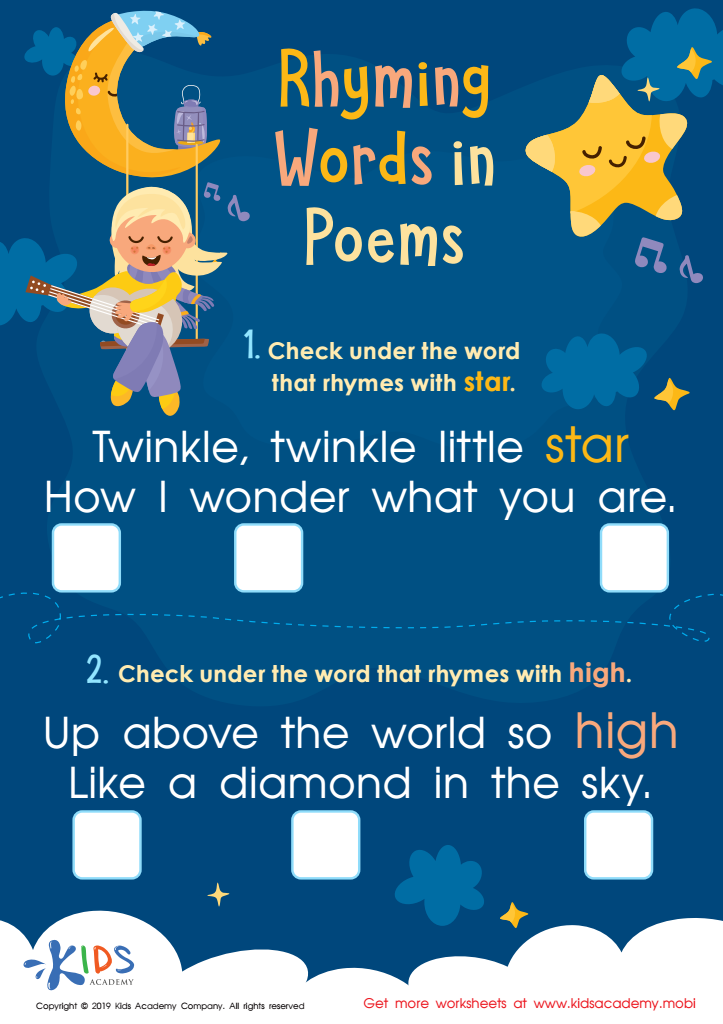

Rhyming Words in Poems Worksheet
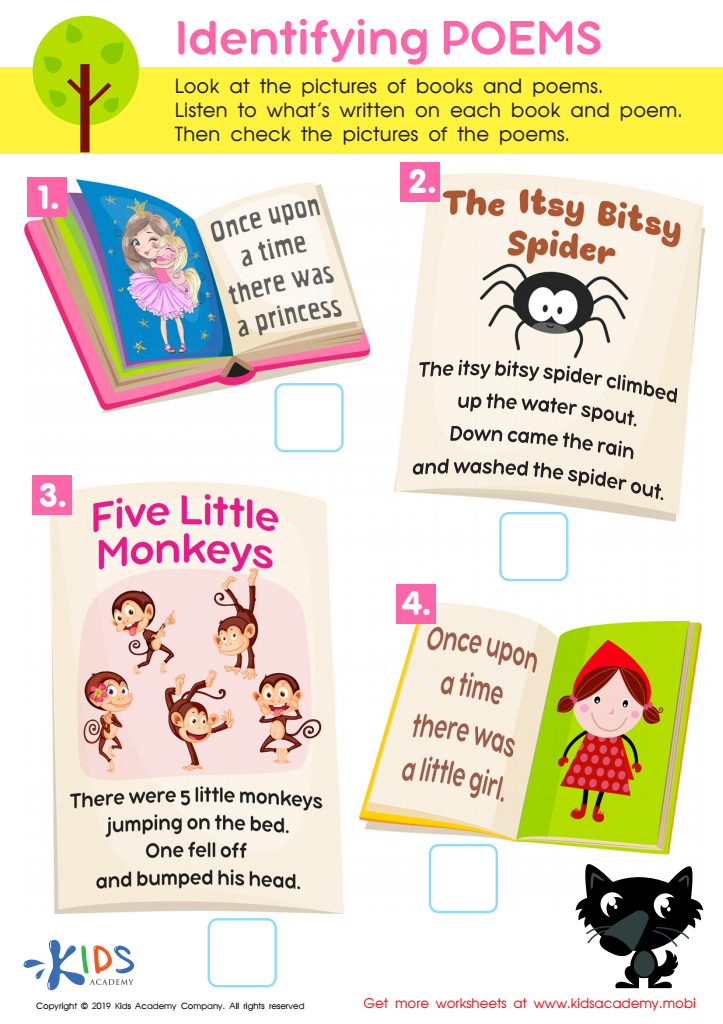

Identifying Poems Worksheet
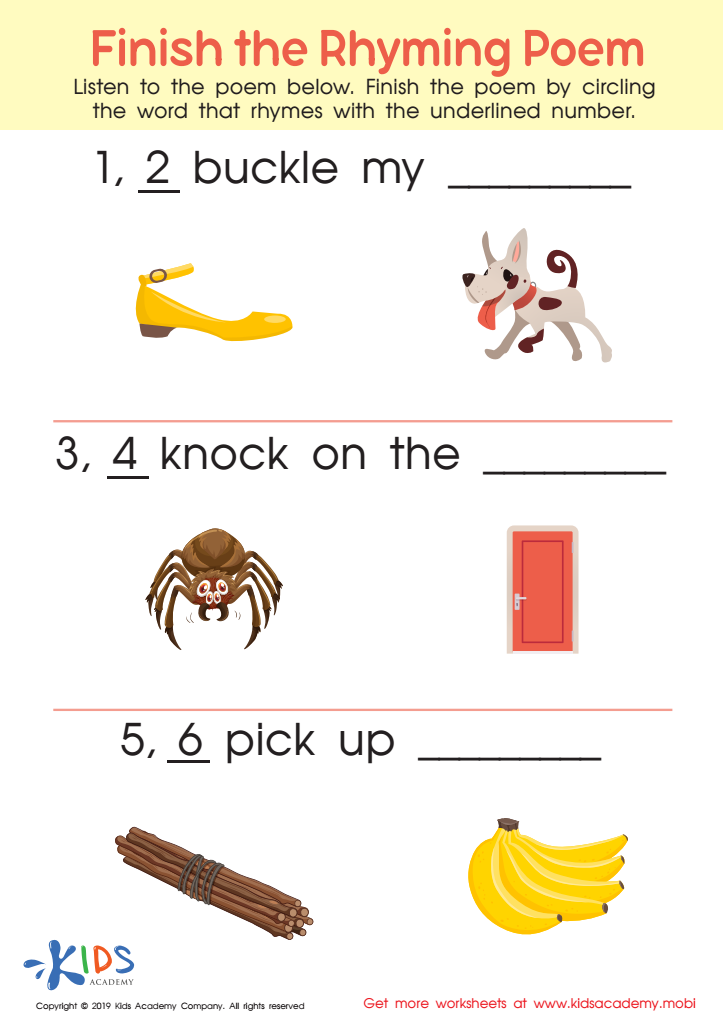

Finish Rhyming Poem Worksheet
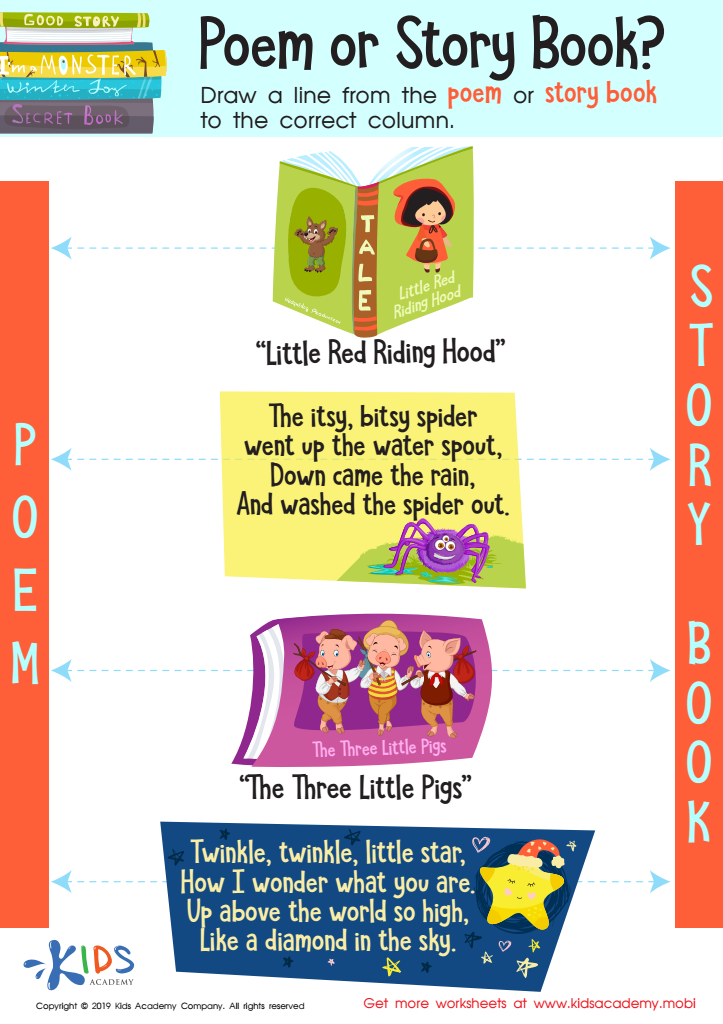

Poem or Story Book? Worksheet
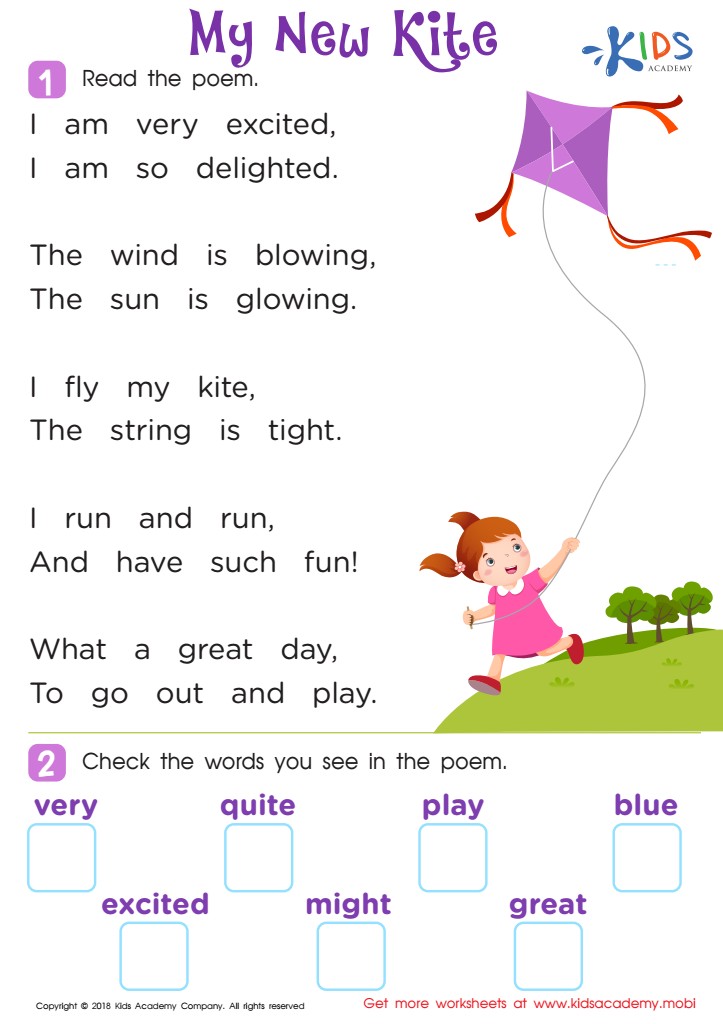

Poem: My New Kite Worksheet
Normal Poems worksheets activities are an invaluable resource for educators and students alike. They serve as a bridge connecting the art of poetry to the practical skills students need to develop in language arts. Engaging in these activities allows learners to dive deep into the world of poetry, exploring its various forms, themes, and stylistic elements in a structured and interactive way.
One primary reason these worksheets are so useful is their ability to cultivate a deeper appreciation and understanding of poetry among students. Through carefully designed exercises, students can dissect poems, examining their structure, rhyme schemes, and the use of literary devices such as metaphors and similes. This hands-on approach demystifies poetry, making it more accessible and less daunting for young learners.
Furthermore, Normal Poems worksheets activities are tailored to enhance critical thinking and analytical skills. Students are not just passive readers; they become active participants, encouraged to interpret meanings, discuss themes, and critique the poet's choices. This active engagement promotes a higher level of cognitive processing, which is essential in developing a nuanced understanding of literature.
Another significant advantage is the improvement of language skills. As students engage with the poems through various activities, they encounter new vocabulary and expressions, which are then reinforced through exercises such as fill-in-the-blanks, matching, and sentence construction. These practices not only expand their lexicon but also improve their overall language proficiency.
Moreover, Normal Poems worksheets activities foster creativity and expression. Many worksheets include writing prompts or tasks that require students to compose their own verses, encouraging them to experiment with language and express their thoughts and feelings poetically. This creative outlet enhances their writing skills and boosts confidence in their ability to use language in diverse and meaningful ways.
In conclusion, Normal Poems worksheets activities are an essential tool in the language arts curriculum. They offer a multifaceted approach to learning that enriches students' understanding of poetry, sharpens their critical thinking and analytical abilities, expands their vocabulary, and nurtures their creative talents. These activities make the exploration of poetry an engaging, insightful, and rewarding experience.
 Assign to My Students
Assign to My Students


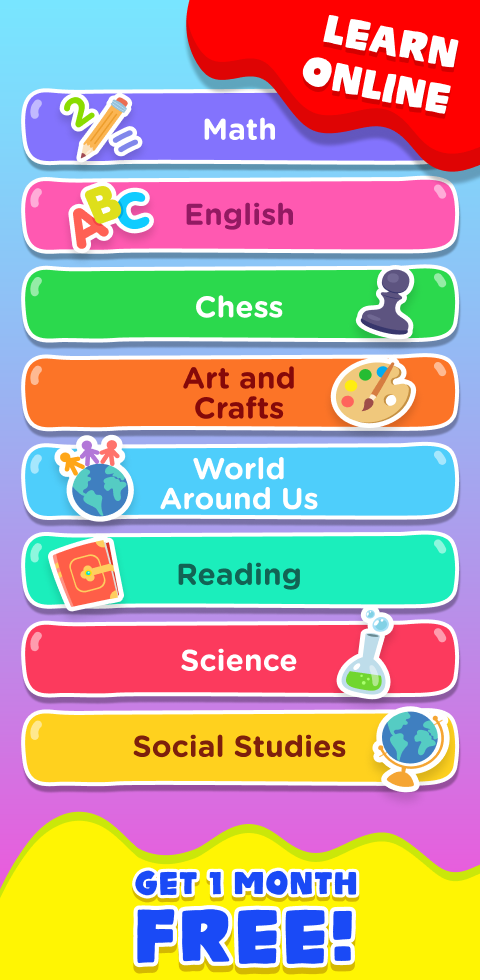





.jpg)











